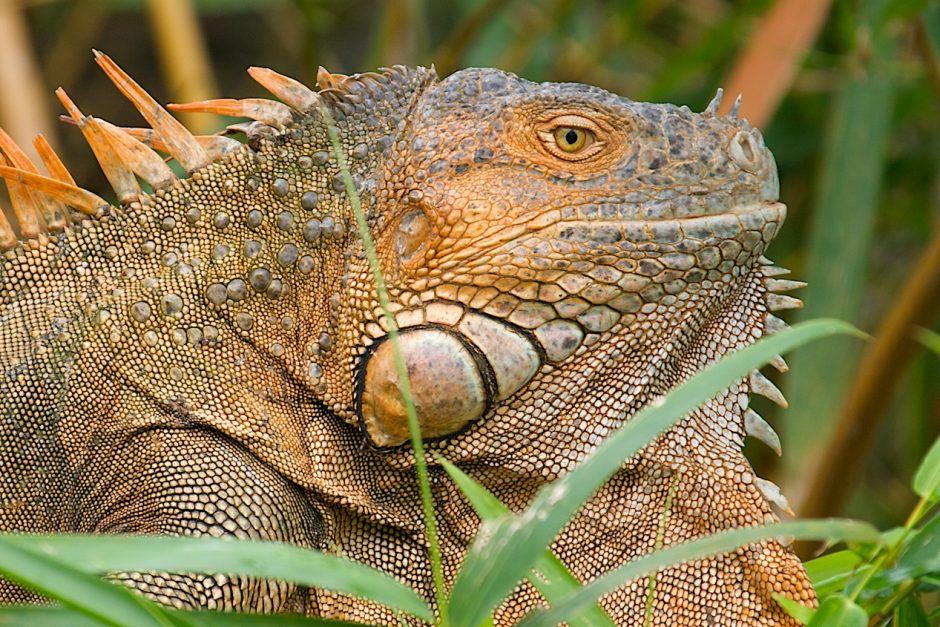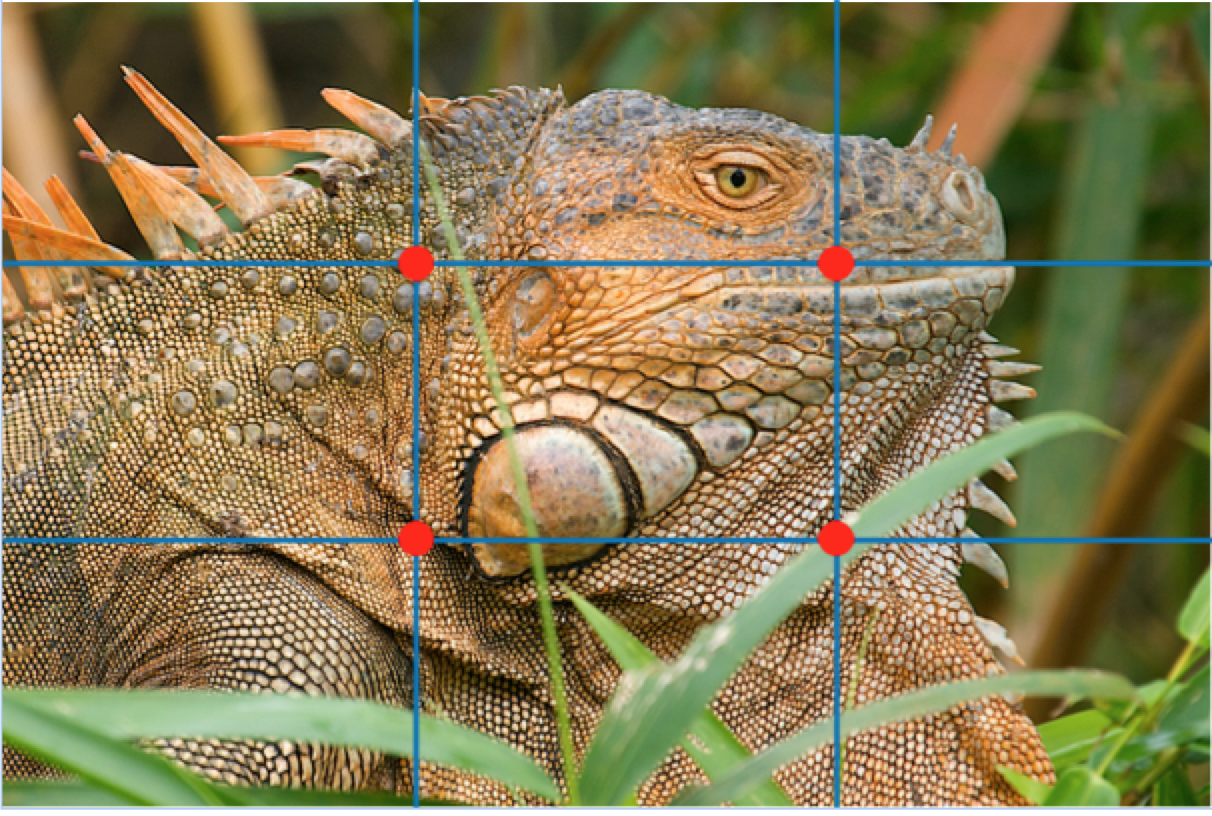
How to get this shot – Tree Iguana in Costa Rica
When it comes to regions and countries with high biodiversity, reptiles are often one of the groups that tend to be highly photogenic and amazing to watch. They’re often unique colors, have amazing textures, and are just plain fascinating in many ways. If you’re headed to Costa Rica and plan on photographing the wonders that await, read on for tips on photographing these alluring reptiles.
- First, you’ve of course got to get yourself in front of one of these animals. While they’re indeed ubiquitous, finding them in the right place at the right time for amazing photographs can be challenging. When possible, I do recommend going with highly professional wildlife naturalists and guides, as some of the best photo ops can be missed if you’re not accustomed to spotting wildlife in dense jungles.
- Next, when you do spot one of these sensational critters, you’ll want to get the right angle on it. Being tree iguanas, they’re often found at considerable height in rain forest trees. The challenge here is not the distance, but the angle. You will likely have a 300mm or 400mm lens with you (capable of something like 6 to 10x optical zoom equivalent), so that will allow you to fill the frame with the animal–a great approach. The problem is that if you’re underneath the iguana, you’ll be photographing towards the sky, which could mean that the photo is “blown out” because of the bright sky light. What you want to do is to try and photograph animals in trees at eye level if at all possible. Even a slight leveling of angle is better, as you want the background to be the foliage, to allow for even lighting.
- Next let’s figure out camera settings. For this, we really want to try and blur out the background to bring more focus and attention to the subject. Because the background may be dense jungle, it’s going to be comprised of an intertwining mix of branches, leaves, vines, and lots of distracting texture. Shooting on aperture priority mode on f/4 or f/5.6 at first will be good. Then, try a couple other shots at f/7.1 and f/8 for good measure. Depending on how dark the environment is, you may need to set your ISO higher, like ISO 800 or 1600 to compensate. Read here if you’d like to Get to Know your ISO.
- Finally, you’ll want to line yourself up and find a good composition. “Fill the frame” shots of wildlife are notorious for being ill-composed. That is, photographers, who may otherwise be borderline obsessed with composition, forget about this key ingredient when the animal’s face or head fills up the whole frame of the camera. People often think that it’s so impressionable at the get go (which it indeed is), composition isn’t as necessary. Not true. You must still use techniques like Rule of Thirds or Golden Ratio to get the most aesthetic version of the photo. When in doubt, don’t zoom in all the way and allow a little space so you can then crop the photo on your computer later. This will give you greater time to get the ideal composition when you have the ability to play around with various compositions.

- A good exercise for seeing how “good” you did with adhering to traditional composition rules, try and overlay a rule-of-thirds grid over your photo on the computer. Where are the intersecting points? Where are the cut offs for 2/3s and 1/3s sections? Is there any significance? In this case, you can see that it does apply, somewhat loosely. The eye (which is always a key focal point for filling-the-frame wildlife shots) is pretty close to the upper right intersecting point. Not spot on, but close. The part of the animal that is most intriguing and unique (the face, textured body, spines, etc.) is in the left 2/3s of the frame. Pretty good. Most of that distracting grass is in the bottom 1/3 of the frame—also good (I would have loved for that one blade shooting straight up to not have ben there, but oh well…that’s nature for ya). You’ll also notice that the spines coming off the animals back is entirely in the one upper left section—this indicates good proportion. So, you can see, there aren’t hard and fast rules for what needs to be where. You just have to be able to justify using the rule-of-thirds in some way…that is what makes for the most appeal possible.
- Finally, fire away! With tree iguanas, they are usually quite sedentary, but they’re also known to scamper off quickly and without warning. Be sure to avoid sudden movements or loud noises, as they can flee the scene easily. However, while you have one in front of you, take advantage and try lots of settings, lots of compositions, and be sure to enjoy the sighting, as they’re truly amazing animals!
Cheers,

Court
Leave a reply